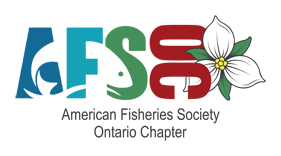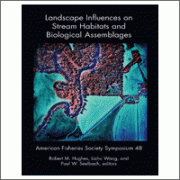Hindcasting Reference Conditions in Streams
AUTHOR(S): Bruce W. Kilgour, Les W. Stanfield
CITATION:
Kilgour, B.W. and L.W. Stanfield. 2006. Hindcasting reference conditions in streams. In: Landscape influences on stream habitats and biological assemblages. American Fisheries Society, Madison, WI. 48: 623-639. https://doi.org/10.47886/9781888569766.ch30
ABSTRACT:
Assessments of stream fish or benthos assemblages normally involve a contrast of conditions at “test” sites to conditions represented by “regional” reference sites that are either minimally or least disturbed. Identification of reference sites is difficult and normally involves a variety of subjective criteria.
The development of reference models for stream fish and benthos in the Canadian tributaries of Lake Ontario is particularly challenging because there are few undeveloped areas and there is no consensus on criteria for a least-disturbed condition. Rather than identify sites as representing a least-disturbed condition, we developed a series of models that relate the existing biophysical condition of streams (i.e., the fish, benthos, and instream habitat) to landscape (i.e., slope, geology, catchment area) and land use/land cover (percent impervious cover [PIC]). Relationships between indices of biophysical condition and PIC can be used to “hindcast” or estimate the expected biophysical condition at a variety of land cover scenarios. The models cannot be used to predict conditions outside the calibration data range, but this approach does allow us to make use of a disturbance gradient and make predictions with a minimal number of least-disturbed sites. The difference between the hindcast reference and present day conditions is an estimate of present-day impacts. Results from this exercise provided an estimate of the magnitude of impairment of streams in the Canadian portion of the Lake Ontario region.
FULL TEXT – Kilgour and Stanfield



